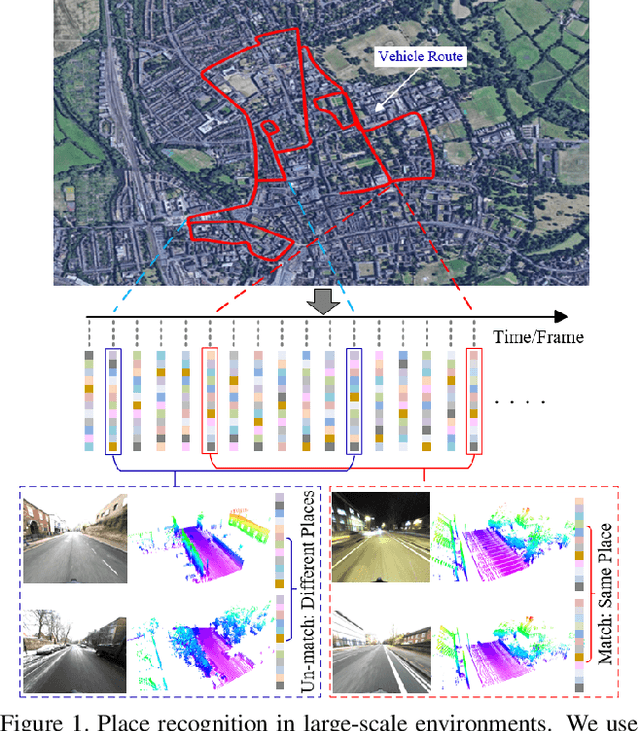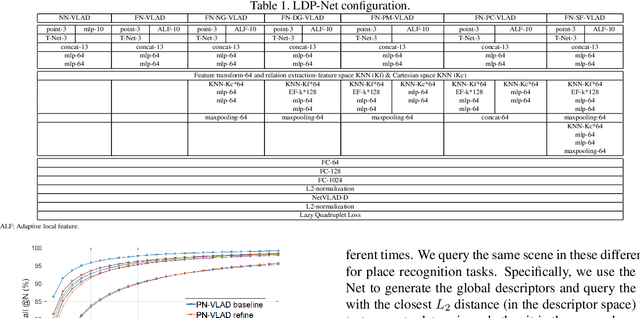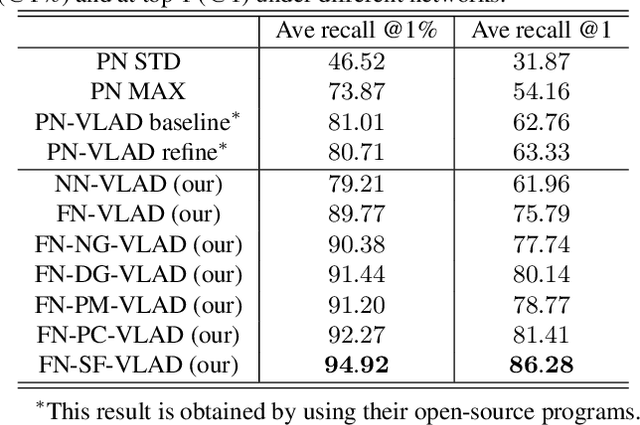Chuanzhe Suo
Loop-Closure Detection Based on 3D Point Cloud Learning for Self-Driving Industry Vehicles
Apr 30, 2019



Abstract:Self-driving industry vehicle plays a key role in the industry automation and contributes to resolve the problems of the shortage and increasing cost in manpower. Place recognition and loop-closure detection are main challenges in the localization and navigation tasks, specially when industry vehicles work in large-scale complex environments, such as the logistics warehouse and the port terminal. In this paper, we resolve the loop-closure detection problem by developing a novel 3D point cloud learning network, an active super keyframe selection method and a coarse-to-fine sequence matching strategy. More specifically, we first propose a novel deep neural network to extract a global descriptors from the original large-scale 3D point cloud, then based on which, an environment analysis approach is presented to investigate the feature space distribution of the global descriptors and actively select several super keyframes. Finally, a coarse-to-fine sequence matching strategy, which includes a super keyframe based coarse matching stage and a local sequence matching stage, is presented to ensure the loop-closure detection accuracy and real-time performance simultaneously. The proposed network is evaluated in different datasets and obtains a substantial improvement against the state-of-the-art PointNetVLAD in place recognition tasks. Experiment results on a self-driving industry vehicle validate the effectiveness of the proposed loop-closure detection algorithm.
3D Point Cloud Learning for Large-scale Environment Analysis and Place Recognition
Dec 11, 2018



Abstract:In this paper, we develop a new deep neural network which can extract discriminative and generalizable global descriptors from the raw 3D point cloud. Specifically, two novel modules, Adaptive Local Feature Extraction and Graph-based Neighborhood Aggregation, are designed and integrated into our network. This contributes to extract the local features adequately, reveal the spatial distribution of the point cloud, and find out the local structure and neighborhood relations of each part in a large-scale point cloud with an end-to-end manner. Furthermore, we utilize the network output for point cloud based analysis and retrieval tasks to achieve large-scale place recognition and environmental analysis. We tested our approach on the Oxford RobotCar dataset. The results for place recognition increased the existing state-of-the-art result (PointNetVLAD) from 81.01% to 94.92%. Moreover, we present an application to analyze the large-scale environment by evaluating the uniqueness of each location in the map, which can be applied to localization and loop-closure tasks, which are crucial for robotics and self-driving applications.
 Add to Chrome
Add to Chrome Add to Firefox
Add to Firefox Add to Edge
Add to Edge